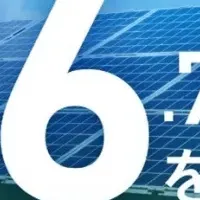
Argentina Lithium Reports Promising Discoveries From Latest Exploration Well in Rincon West Project
Argentina Lithium's Landmark Discoveries at Rincon West Project
Argentina Lithium & Energy Corp, a prominent player in lithium resource development, has recently unveiled promising exploration results from its 14th well at the Rincon West Project in Salta Province, Argentina. The results of this latest investigation further confirm the potential of the area for lithium extraction, an essential mineral for powering batteries in electric vehicles and renewable energy technology.
Overview of Recent Discoveries
On January 29, 2025, the company reported that it collected 16 representative brine samples over a substantial 225-meter interval at drilling site RW-DDH-14. These samples revealed lithium concentrations ranging from 277 to 379 mg/l, demonstrating the region's competitive grade potential. According to Miles Rideout, Vice President of Exploration, all drill holes have consistently shown mid-grade brines, affirming the geological predictions made prior to the drilling operations.
Exploration Well RW-DDH-14
The well RW-DDH-14 marks the fifth hole in a six-hole exploration program planned for the Rinconcita II property. The exploration program aims to closely examine the prospective areas adjacent to the established Rio Tinto’s Rincon Project. Currently, a long-duration pump test is still underway at the sixth hole, RW-RT-01, which is positioned next to RW-DDH-11.
The project, covering an extensive area of approximately 5198.8 hectares within the salar basin, has been constructed incrementally with careful attention to geological surveys and geophysical data interpretation. The rigorous approach to exploration serves to highlight Argentina Lithium's dedication to sound resource development methodologies.
Characteristics of the Drilling Process
RW-DDH-14 utilized HQ-diameter diamond drilling techniques to procure core samples from the salt flats. The brine samples were predominantly obtained using a 'single packer' sampling unit, which allows for precise extraction while sealing the drilling hole from environmental contamination. This iterative methodology ensures the quality and integrity of sample collection during the drilling phase.
Geophysical Insights
Geophysical profiling and PVC filter casing have been executed to delineate the drilling hole, providing a comprehensive overview of the subsurface conditions. Prior analyses indicated extensive geophysical responses, suggesting the presence of conductive targets beneath the surface. As stated, the prospects for additional rotary wells are on the table, pending permit approval from the provincial ministry, which is currently reviewing the permit applications for drilling in new areas.
Historical Context and Future Prospects
The Rincon West Project has garnered attention in the lithium market, particularly due to its strategic location within the Lithium Triangle of South America. This area is known for hosting critical lithium resources, and with increasing global demand for electric vehicles, interest in sustainable lithium production has surged. Argentina Lithium is strategically leveraging this demand by advancing their projects to production levels.
As part of its broader strategic initiatives, Argentina Lithium aims to align its operations with industry leaders. The company's partnerships, including a significant investment from Peugeot Citroen Argentina, a subsidiary of Stellantis N.V., position it uniquely within the lithium market ecosystem.
Conclusion
With the positive results from well RW-DDH-14, Argentina Lithium showcases not only the potential within the Rincon West Project but also reaffirms its commitment to advancing sustainable lithium resource development in Argentina. As exploration continues, stakeholders remain optimistic about the future potential of Argentina Lithium’s projects to meet the growing demands of the battery sector globally.
Topics Energy)










【About Using Articles】
You can freely use the title and article content by linking to the page where the article is posted.
※ Images cannot be used.
【About Links】
Links are free to use.